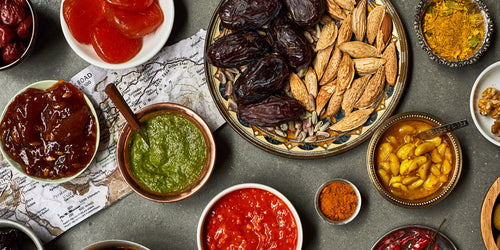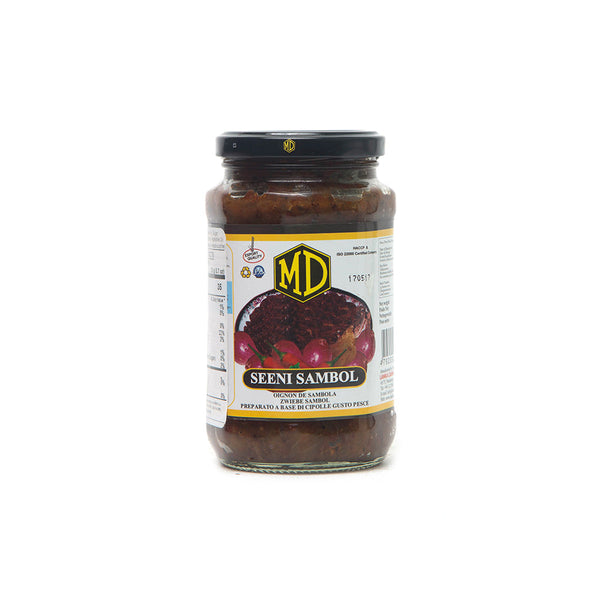Your Cart is Empty
One of China’s wealthiest people is a Guizhou Province grannie whose fortune started with a noodle shop. Her name is Tao Huabi, and she’s the founder of her country’s most popular hot sauce, Lao Gan Ma Spicy Chili Crisp. Maybe you’ve heard of it by a different name: angry lady chile sauce. That’s because every jar of Lao Gan Ma (“old godmother”) features a portrait of Tao’s stern countenance on the label, expressing endless disappointment in you and your cooking, because whatever you make will never taste as good as her chile crisp.
Sample some and you’ll see why Tao has a billion dollars in the bank. Lao Gan Ma chile crisp is a compulsion more than a condiment; once you start sprinkling it over something, you won’t stop until you’re scraping the bottom of the jar with a spoon. The oily sauce includes a balanced mix of crackle-crisp chile flakes, peanuts and soybeans, and just the right amount of heat, sweetness, and MSG. There’s audible crunch that perfectly complements noodles and eggs. A tongue-numbing tingle ideal for adorning stir fried vegetables, raw fruit, and pizza. Chinese teens spoon it over ice cream and brag about it on the internet, and it works.
In recent years, Lao Gan Ma has ascended from pantry staple to pop-culture icon. “Many have described the fandom as cult-like,” Cathy Erway writes in Taste, “and that seems appropriate, given the intensity of the devotion.” Lao Gan Ma couture appeared at a Chinese fashion week event last year, and American food publications can’t stop raving about it; there’s even an indie food mag now called Lao Gan Magazine. “Thanks to its nutrition label, which boldly declares that a 210-gram jar constitutes four servings, I’ve finally found a condiment that fully understands me,” writes Sohla El-Waylly at Serious Eats, as the introduction to her alluring DIY version.
All of which is to say, if you haven’t tried this crackly fireball, we’d recommend a jar. But also recognize that chile crisp is a whole genre of condiments. Too often, Lao Gan Maniacs begin and end their love for chile crisp with the angry lady, without exploring the wider world of commendable condiments out there. Here’s a guide to get you started.
Chinese chile oils
Homemade versions of chile crisp like Tao’s are common in Guizhou, where they’re often mixed with black vinegar as a sauce for noodles in dumplings. In Sichuan, the province’s eponymous mouth-numbing peppercorns often enter the mix, along with deeper spices like star anise and cassia bark. Up north in the city of Tianjin near the Korean peninsula, Dumpling Galaxy chef Helen You learned to make chile oil with Korean chile flakes, called gochugaru.
Elsewhere in Asia
A few Japanese manufacturers make their own version of la-yu (‘spicy oil’) that feature the same irresistible crunch as Lao Gan Ma, like S&B’s version, which also contains a dose of sesame oil. These tend to be less spicy than their Chinese counterparts and usually include heavier amounts of crisp garlic.
In the Himalayan kingdom of Bhutan, chile crisp gets way hotter. Ezay is a national condiment that comes in many forms, but often packs a wallop thanks to the inclusion of fiery, fragrant dalle peppers. Down in coastal Bangladesh and Malaysia, smoked and dried fish often find their way into crispy oil-drenched condiments; these are potent flavor bombs to liven up rice, lentils, and simmered vegetables. And in Sri Lanka there’s seeni sambol, more of a savory caramelized onion relish than a true chile crisp, but quite often prickly with chile heat and with a similar texture.
And beyond
Asia may be chile crisp headquarters, but it doesn’t have a monopoly on the concept. One of the most noteworthy is salsa macha, a Mexican sauce of dried chiles toasted in hot oil along with ground peanuts, sesame seeds, and/or pumpkin seeds. With little liquid beyond that fat, the salsa develops a slinky, crunchy texture that spreads a warm blanket of heat across your lips.
Chile Crunch is a modern macha of sorts, made by a Mexico City-born cook who wanted to capture some of Mexico’s essential flavors for consumers beyond its borders. Like Lao Gan Ma, it’s impressively crunchy, with onion, garlic, and arbol chiles contributing distinct flavors and textures; we find it has a more roasty-toasty vibe than most Asian chile crisps.

Recently, a couple new American producers have entered the chile crisp game. Blank Slate’s Szechuan Chili Oil is made in Brooklyn and follows a Sichuan style recipe, including tingly Sichuan peppercorns, but also adds sweet shallots and a complex blend of spices.
Back in Mexico, two brothers are behind the Don Chilio line of chile crisps: three hyper-specific jars of fresh chiles toasted in olive oil until shatteringly crisp. They make jalapeno, serrano, and habanero versions in progressive order of heat, and after the initial fruity-sharp blast of spice, you’re left with a caramelized bittersweet flavor that lingers on your tongue. Call it the chile nerd’s chile crisp.
What to spread them on
Once you’re loaded up with chile crisp, but it to work on these spice substrates.
Recipe: Hoecake with Kimchi, Scallions, and Nori
Recipe: Melissa Clark's Fried Halloumi with Spicy Brussels Sprouts
Recipe: Spicy Beef Dumplings








